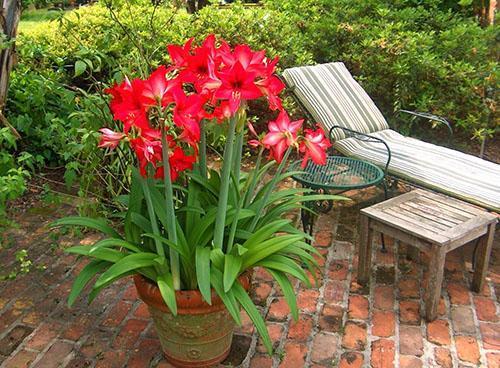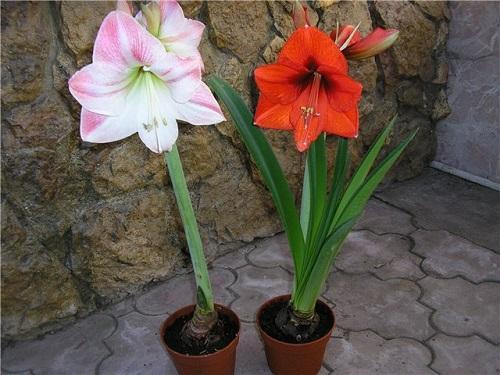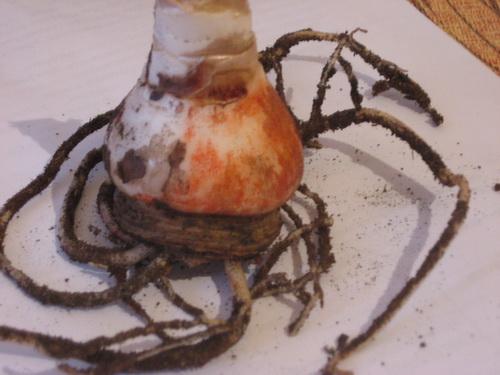When and how to transplant hippeastrum?
Hippeastrum belong to bulbous plants. They bloom very beautifully - on a long arrow there are 4-5 large flowers similar to lilies. They are quite unpretentious, and even amateurs without experience can grow a flower. One of the conditions for caring for hippeastrum is its regular transplant.
When to transplant hippeastrum

Adult hippeastrum is recommended to be replanted every two years, and young plants are reloaded annually. The best time for this is spring. It is best to replant the plant after it has faded, 3-4 weeks later. If the root system is healthy, you do not need to prune it; it is enough to remove dry and diseased roots.
Choosing a pot for transplant

For transplanting, you should pick up a pot that is only a few centimeters larger than the previous one. In too large a container, the hippeastrum will not bloom, but will direct all its strength to reproduction - the formation of children.
The distance between the walls of the pot and the bulb should be no more than 2 centimeters.
The plant has a sufficiently developed root system, so it is better to choose a pot not too high, but wide in the lower part. It is better if it is ceramic - this will allow the roots to breathe. In addition, such a pot will not tip over under the weight of large long leaves. You can also use a long container for group planting. At the same time, the bulbs are placed with a distance of 10 cm.
Soil preparation
Hippeastrum grows well in nutritious loose soil. At home, such a substrate can be made by mixing the following components in equal parts:
- sod land;
- leafy ground;
- humus;
- sand.
At the bottom of the pot, be sure to lay out a drainage layer (expanded clay).
Preparing the hippeastrum bulb for transplant

After removing from the old pot, remove all dry and black scales from the bulb, peeling it down to white elastic tissues. This helps to activate the further growth of the flower and will help get rid of putrefactive bacteria hiding between the scales.
Place the peeled onions in a pink potassium permanganate solution for 30 minutes, and then dry thoroughly.
There are often small children on the hippeastrum. To accelerate flowering, they are removed so that they do not take away strength from the mother bulb. If further reproduction of the plant is planned, the bulbs are left. Already formed young bulbs should be separated and transplanted into a separate pot, where they will bloom in the third year.

The babies remaining on the bulb during transplantation can delay the next flowering of the hippeastrum.
Hippeastrum transplant

When transplanting, the bulb must be placed in the soil so that it protrudes 1/3 above the surface. Experienced growers claim that this will bring flowering closer. Tamp and water the soil around the bulb.
At the bottom of the pot, on the very drainage, you can put a complex fertilizer in the form of a stick (1 piece). Place the pot with the transplanted plant on a well-lit windowsill in a warm room.